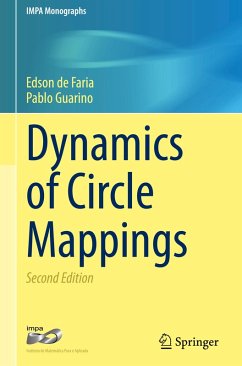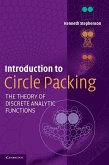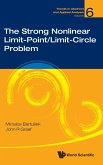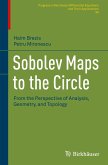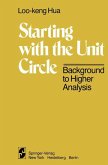This book explores recent developments in the dynamics of invertible circle maps, a rich and captivating topic in one-dimensional dynamics. It focuses on two main classes of invertible dynamical systems on the circle: global diffeomorphisms and smooth homeomorphisms with critical points. The latter is the book's core, reflecting the authors' recent research interests.
Organized into four parts and 14 chapters, the content covers rigid rotations, circle homeomorphisms, and the concept of rotation number in the first part. The second part delves into circle diffeomorphisms, presenting classical results. The third part introduces multicritical circle maps-smooth homeomorphisms of the circle with a finite number of critical points. The fourth and final part centers on renormalization theory, analyzing the fine geometric structure of orbits of multicritical circle maps. Complete proofs for several fundamental results in circle dynamics are provided throughout. The book concludes with a list of open questions.
Primarily intended for graduate students and young researchers in dynamical systems, this book is also suitable for mathematicians from other fields with an interest in the subject. Prerequisites include familiarity with the content of a standard graduate course in real analysis, along with some understanding of ergodic theory and dynamical systems. Basic knowledge of complex analysis is needed for specific chapters.
Organized into four parts and 14 chapters, the content covers rigid rotations, circle homeomorphisms, and the concept of rotation number in the first part. The second part delves into circle diffeomorphisms, presenting classical results. The third part introduces multicritical circle maps-smooth homeomorphisms of the circle with a finite number of critical points. The fourth and final part centers on renormalization theory, analyzing the fine geometric structure of orbits of multicritical circle maps. Complete proofs for several fundamental results in circle dynamics are provided throughout. The book concludes with a list of open questions.
Primarily intended for graduate students and young researchers in dynamical systems, this book is also suitable for mathematicians from other fields with an interest in the subject. Prerequisites include familiarity with the content of a standard graduate course in real analysis, along with some understanding of ergodic theory and dynamical systems. Basic knowledge of complex analysis is needed for specific chapters.

